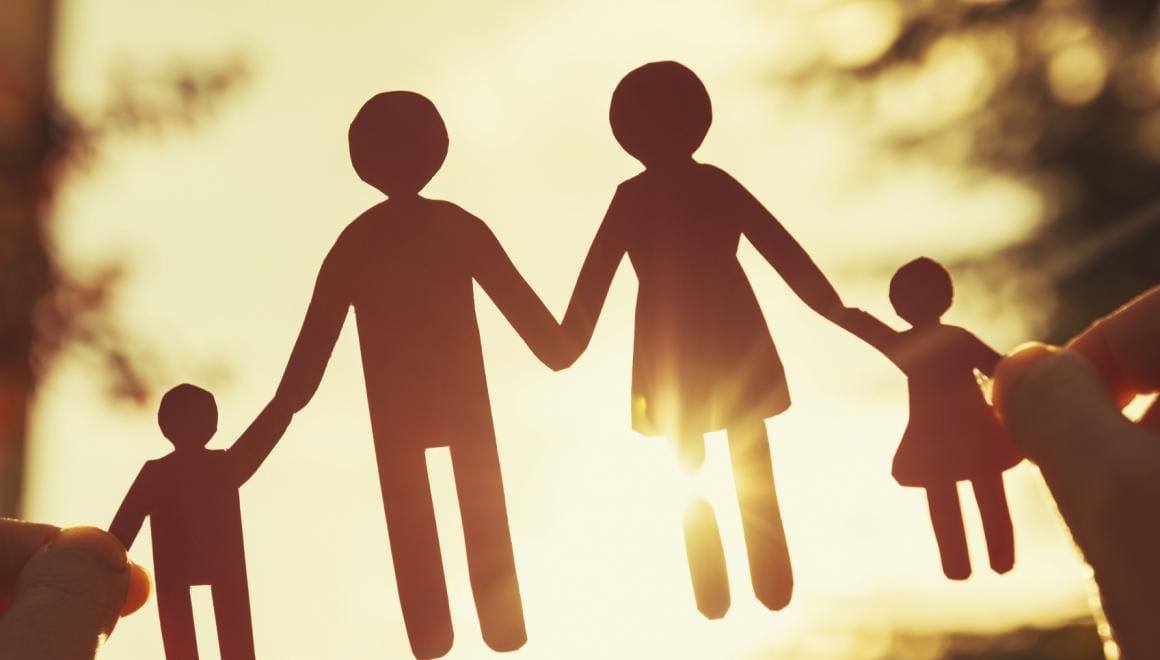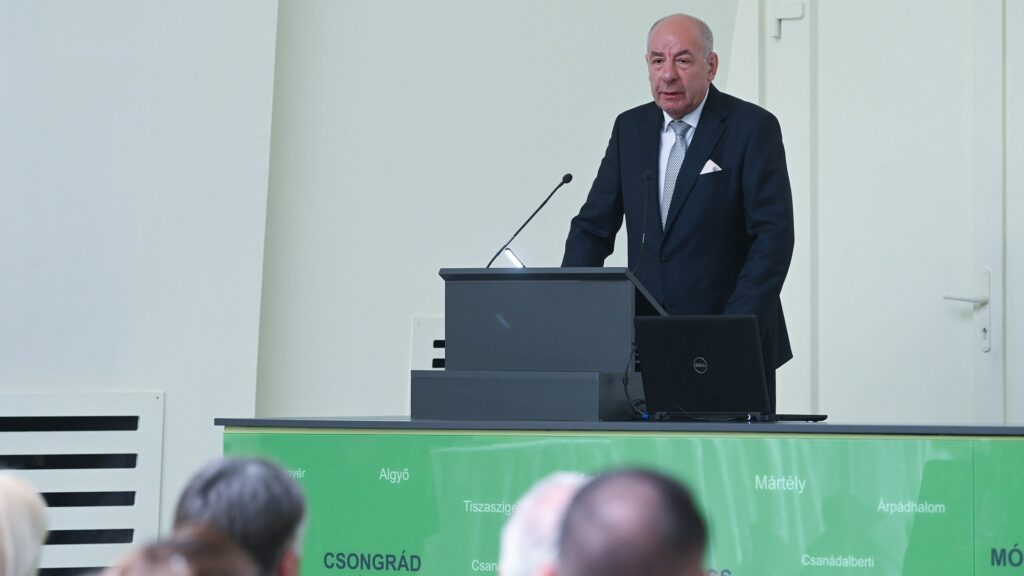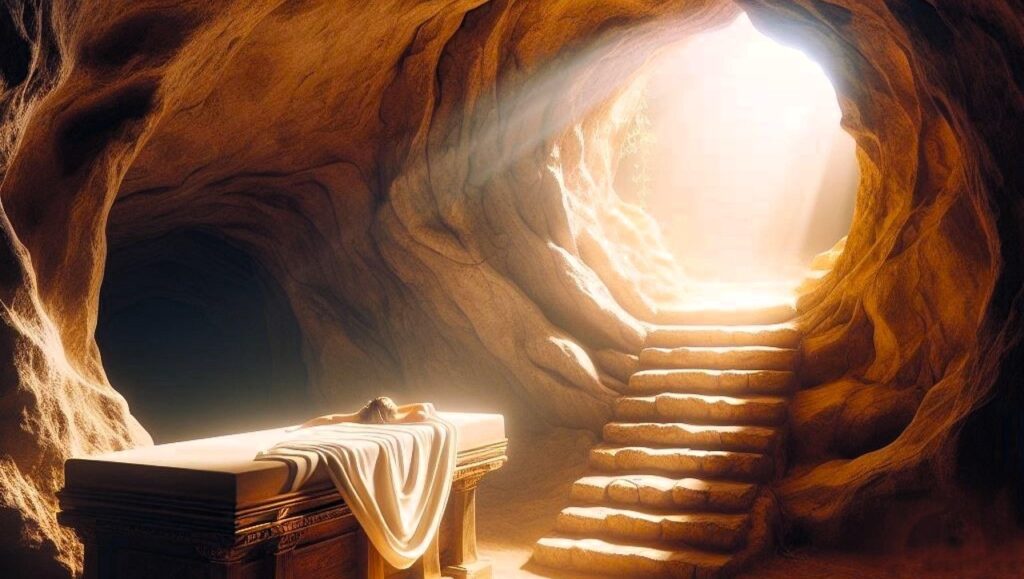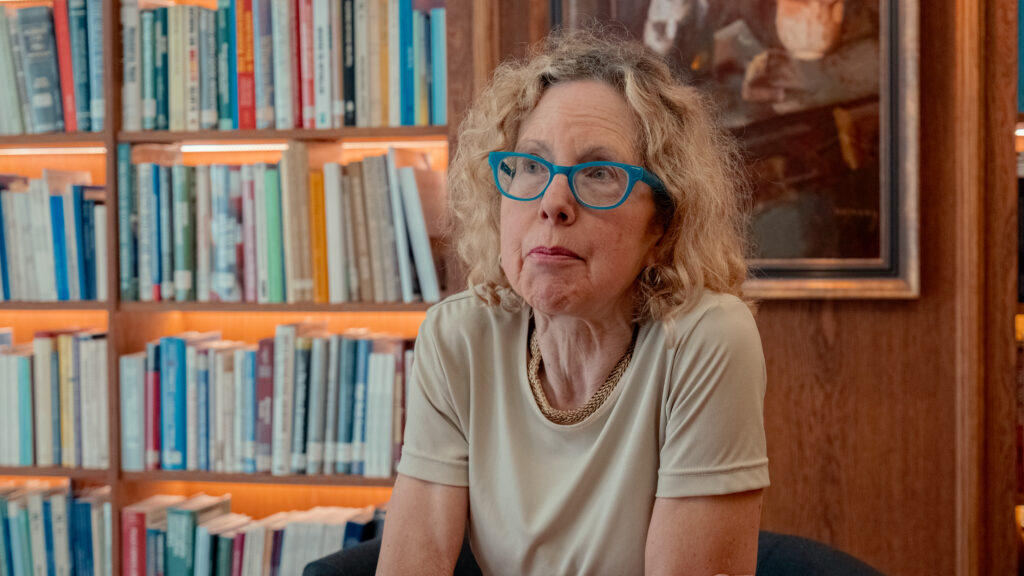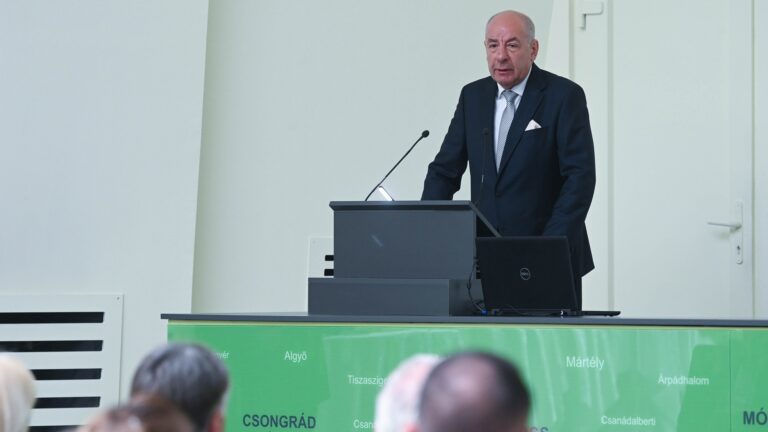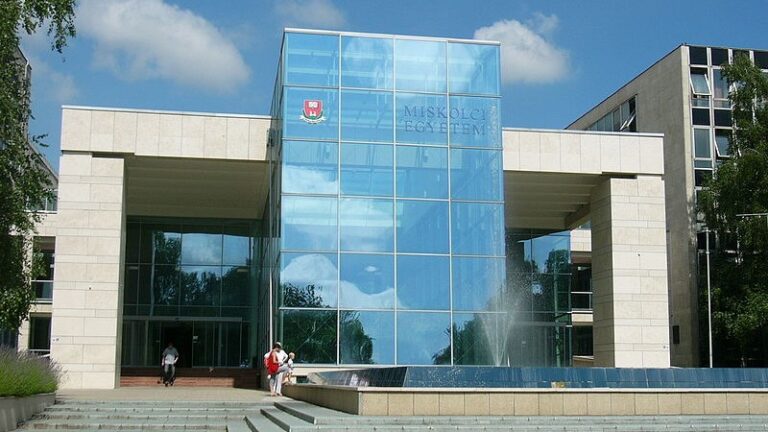Rainbow family, mosaic family, stepparent family, one-parent family—and maybe traditional family. Today there are many different understandings of family, forms, or models which are considered equal. I am going to analyse this perceived equality, and the endeavour is not without dangers, for this equality of forms and models is not something supposed to be established and argued for with concrete proofs, data, and arguments. Why? Because if you try to argue for this equality, it implies that it can be contested. And that is precisely what proponents of the concept try to avoid at all costs. Therefore, equality of forms of family is taken for granted. It is an act of faith (though not a dogma, because dogmas are traditionally based on arguments), which is not supposed to be questioned or established through proofs.
In what follows, however, I am not going to argue in favour of this equality, but rather question it. For the notion is both pragmatically problematic and undermined by the findings of social science: the unfolding definition of family is empty, and the concept of equality is unclear here.
Definition of family
When the definition of marriage changed from the traditional conjugal view to the revisionist view, it essentially lost its content. According to the conjugal view, marriage is a bodily, emotional, and spiritual bond, ‘distinguished by its comprehensiveness’, and while love is an important part of it, there are objective criteria—at least the theoretical possibility of procreation, meaning it has to be between a man and a woman. The revisionist view sees marriage as simply an emotional bond, distinguished by its intensity. There are no objective criteria.1 Therefore, ‘love is love’—as the tautological, irrational PR-slogan has it—and not only can same-sex partners marry, but polygamy is also admitted, and so is even marriage between parents and children. Actually, anybody can marry anybody, and any kind of human relationship could become marriage upon request. This definition of marriage is so broad that it does not mean anything—it is empty.
If a human community is sufficiently important and vital for us, we usually say metaphorically that ‘we are a big family’ or ‘we are like a family’
The same happens with the definition of family. Not only are alternative forms gaining increasing importance, but what we are witnessing is the theoretical deconstruction of the family. If a human community is sufficiently important and vital for us, we usually say metaphorically that ‘we are a big family’ or ‘we are like a family’. This is a metaphorical usage of the word ‘family’. But today certain movements—especially the LGBTQIA-movement and feminists—try to use it in a literal sense. According to them, not only are alternative forms of family also families (and equal), but if I want to call my pets and me a family, it has to be acknowledged that this is literally (not only metaphorically) a family. As in the case of marriage, any kind of human relationship could become a family simply upon request. This definition of family is so broad that it does not mean anything—it is empty.
The question of equality
Equality has become a magic buzzword. It is like democracy. Today everything has to be ‘democratic’ in order to be legitimate. Think of ‘democratic values’. Values are values, democracy is democracy, and if democracy creates values, which are values because they are democratically acknowledged, it means they can be constantly changed. Human rights—another contestable buzzword, which has to be taken for granted—are not democratic by the liberal standards of our time, but nobody dares to acknowledge this fact. Human rights—at least as the human rights industry understands them—are not questionable democratically, democracy is possible only within their confines.
The case of equality is similar: you cannot question it democratically because in that case the human rights industry will speak about the ‘hijacking’ of democracy. Nor do we even know what kind of equality we are talking about: the equality of the ‘value’ of family models, or their economic equality, or equality by their mental usefulness—by which I mean that all of them are mentally healthy to an equal degree, or are all equally fulfilling emotionally.
I imagine that this notion of equality tries to convince us that the different forms of family are equally fulfilling emotionally, and that none of them cause more mental problems than others. The problem here is that social science shows that this is not true. Then they try to prove that the traditional family is in fact more problematic, because it is ideal only in theory, and can give rise to domestic violence. Thus, they try to magnify problems within the traditional family and ignore problems within other forms of family. It is an interesting effort at the ‘equalization’ of classic and alternative models.
Problems of alternative family forms
Diverse forms and models of family are not equal, either according to social science or common sense. Imre Bedő, president of Men’sClub in Hungary, put it well when he said that the traditional, biological family is the yardstick, and anything else is a coercive solution. Just think of the problems of divorced parents and their children—and those problems are not only financial, but also mental. Stepfathers, stepmothers, and relatives can only partly replace biological parents. Their presence relieves some problems, but falls short of that of real parents.2
Several studies and meta-analyses show that there is more domestic violence, be it physical, sexual, or verbal, in the homes of same-sex couples
Australian scholar Sotirios Sarantakos researched 174 students in twenty fields in 1996. Children of traditional families (biological parents) had the best results, and children raised by same-sex couples got worse results than children of divorced parents (one-parent families) did.3 Several studies and meta-analyses show that there is more domestic violence, be it physical, sexual, or verbal, in the homes of same-sex couples.4 The idea that ‘rainbow families’ match up to traditional families is seriously questioned by many scientific studies. And many of the rainbow families’ problems are not caused by social discrimination, but by internal factors.5 Children who have grown up with their biological parents have fewer behavioural problems. Fathers have a critical role in the development of their daughters, for example, helping them to form better partnerships later. Among other factors, biological fathers teach their children to respect the law, strengthen their cognitive abilities, and help them to develop better linguistic skills. Children who have a positive picture of their father perform better at school and form better relationships with both sexes.6
Mothers and fathers have different childrearing styles. Mothers tend to bring up their children to connect with other people, giving them emotional education, and their love is unconditional. Fathers train their children in autonomy, action, risk-taking, and following rules. Some 172 studies found differences regarding the role of mothers and fathers in the raising of their children,7 and most of these differences are determined biologically.
We can thus conclude that different forms of families are not really equal in terms of mental and emotional health. Of course, there are situations in which there is no other solution than to dissolve the family and replace it with new bonds. But the new formula will not match up to the classic family. Models are not equal.
Historical changes of families
Progressives and researchers usually point out that what we call today the ‘traditional family’ is a nuclear family, which is not really ancient, and that the so-called nostalgia of traditionalists is in fact a nostalgia for the American fifties.8
The only problem is that the US’s case is unique, since it is a relatively young country. Why should we in Central Europe or in Europe feel nostalgia for a golden decade of America? The so-called nuclear family is not a novel thing: it was a dominant form of family for example in the Hungarian region of Nagykunság two hundred years ago.9 Some authors try to differentiate between nuclear families and the large families of pre-modern times. But this differentiation is misleading: those forms are not really different because the nuclear family is a remnant of the pre-modern large family. Both of them are ‘traditional’ or ‘classic’, and both are based on biological bonds. Large families were nuclear families augmented by close relatives.
In the 1940s, Harvard sociologist Carle C. Zimmerman wrote an interesting book entitled Family and Civilization.10 He points out that three kinds of families dominated the cultures of Western civilization, and that each is ‘traditional’ in our sense: the trustee (clan-like) family, the domestic (large) family, and the atomistic (nuclear) family. The atomistic family became dominant in decadent, declining ages, when alternative forms of marriage and family also gained ground. He draws a parallel between Greek, Roman, and modern times. In healthy cultures, the dominant form is the domestic family. Declining ages have smaller families, and fetishize individual choice and liberty. The elites of declining ages take an anti-familist stance, but where familism is declining, demographic decline follows as a consequence. The rise of so-called alternative forms and models of families are also symptoms of decline. This decline is not irreversible, and what is needed in such times is the ‘counter-revolution of families’.11
NOTES
1 Sherif Girgis, Ryan T. Anderson, and Robert P. George, What is Marriage? Man and Woman: A Defense (New York–London: Encounter Books, 2012), 1–4.
2 Brian D’Onofrio and Robert Emery, ‘Parental Divorce or Separation and Children’s Mental Health, World Psychiatry, 18/1 (February 2018), 100–101; L. Laumann- Billings and Robert Emery, ‘Distress among Young Adults from Divorced Families’, Journal of Family Psychology, 14/4 (2000), 671–687; Donald Paul Sullins, ‘The Tragedy of Divorce for Children’, in Margaret McCarthy, ed., Recovering Origins: Adult Children of Divorce (Grand Rapids, MI: Eerdmans Publishing, 2015).
3 Sotirios Sarantakos, ‘Children in Three Contexts: Family, Education, and Social Development’, Children Australia, 21 (1996/3), 23–31.
4 Paul McHugh and Lawrence Mayer, ‘Sexuality and Gender. Findings from the Biological, Psychological, and Social Sciences’, New Atlantis (Autumn 2016), https://www.thenewatlantis.com/publications/ introduction-sexuality-and-gender. See the chapter titled ‘Sexuality and Intimate Partner Violence’.
5 Henry B. Biller, Fathers and Families: Paternal Factors in Child Development (Westport: Auburn House,
1993); Ronald Rohner and Robert Veneziano, ‘The Importance of Father Love: History and Contemporary Evidence’, Review of General Psychology, 5 (2001/4), 382–405; Mark Regnerus: ‘How Different Are the Adult Children of Parents Who Have Same-sex Relationships? Findings from the New Family Structures Study’, Social Science Research, 41 (2012/4), 752–770; Ana Samuel, No Differences? How Children in Same-Sex Households Fare (The Witherspoon Institute, 2015); Paul Donald Sullins, ‘Emotional Problems among Children with Same-sex Parents: Difference by Definition’, British Journal of Education, Society, and Behavioural Science (February 2015).
6 Anna Sarkadi et al., ‘Fathers’ Involvement and Children’s Developmental Outcomes: A Systematic Review of Longitudinal Studies’, Acta Paediatrica, 97 (2008/2), 153–158.
7 Hugh Lytton and David M. Romney, ‘Parents’ Differential Socialization of Boys and Girls: A Meta- analysis’, Psychological Bulletin, 109 (1991), 267–296.
8 See: Stephanie Coontz, The Way We Never Were: American Families and the Nostalgia Trap (Basic Books, 2016).
9 Tibor Bellon, Nagykunság (Budapest: Gondolat, 1979), 192–205.
10 Carle C. Zimmerman, Family and Civilization (1947; ISI Books, 2008).
11 Zimmerman, Family and Civilization, 20.

